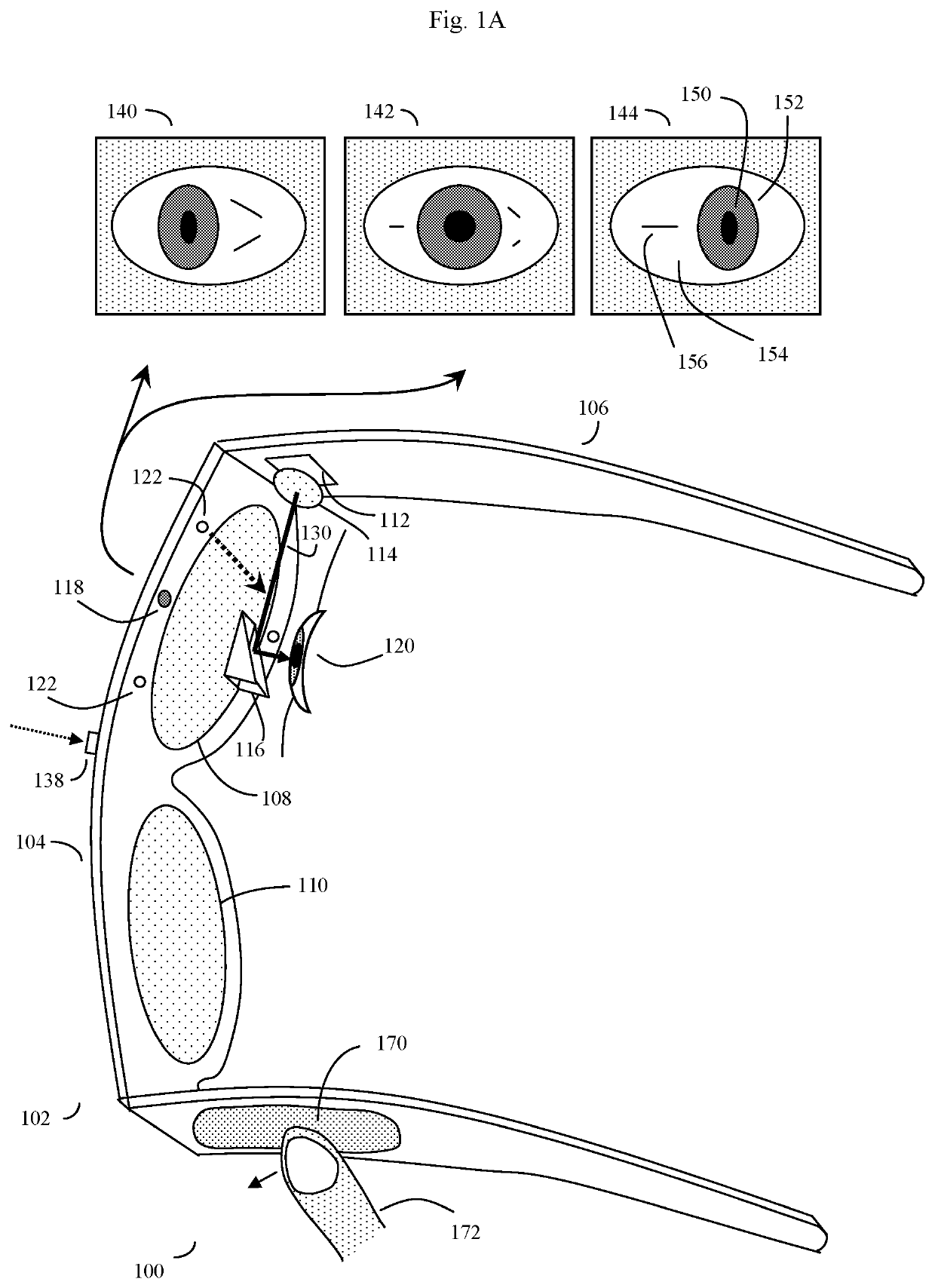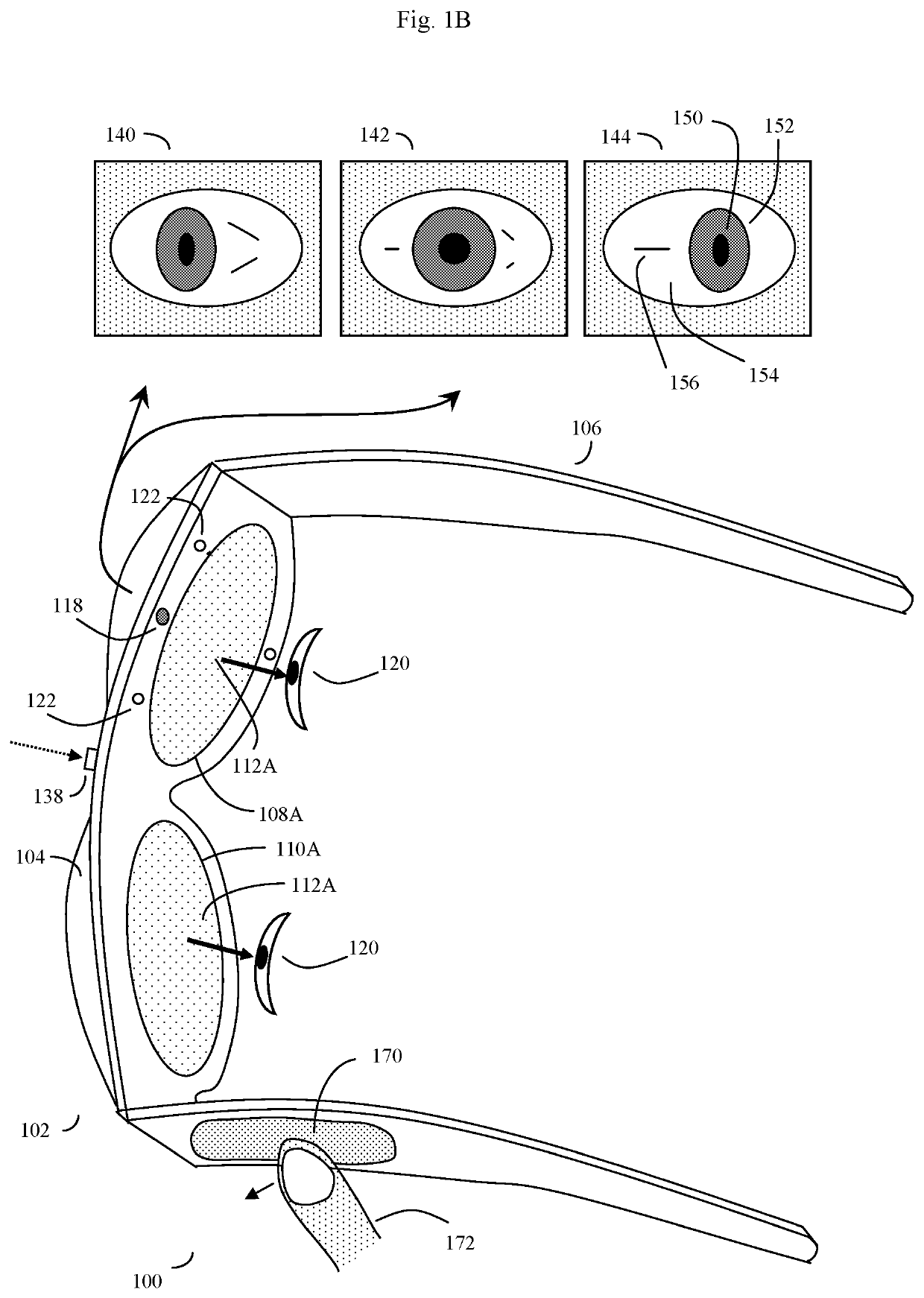Unitized eye-tracking wireless eyeglasses system
a wireless eyeglass and wireless technology, applied in the field of eye-tracking wireless eyeglasses system, can solve the problems of augmented data becoming less useful, augmented image that the device user cannot then quickly and easily select for an additional computing, such as sharing with contacts, and less useful than augmented image that also affords additional actionable options, cell phone or other handheld mobile device, to achieve the effect of minimal user training
- Summary
- Abstract
- Description
- Claims
- Application Information
AI Technical Summary
Benefits of technology
Problems solved by technology
Method used
Image
Examples
example 1
[0147]The camera and computer vision recognition system pick up an image of a check or other financial instrument. The computer vision system transmits a prompt to the device that the device should pull up the user interface virtual solid, here customized with targets for various financial transactions (e.g. depositing into the user's bank account, and the like).
example 2
[0148]The camera and computer vision recognition system pick up a retail store in the vicinity of the user, and that retail store may offer for sale a pair of shoes that the user may be interested in purchasing. For example, the shoes may appear as an augmented reality image to the user based on the user's interaction with a particular shoe type online, at home or at a different store (e.g. different GPS location or online) within a recent time window (say perhaps the last week). The user or the augmented reality application may have trained the device to scan for that type of product, whereupon the computer vision system recognizes the product of interest in the inventory of a nearby store, the system can transmit a prompt to the device that displays an appropriate image of the products with relevant data, e.g., sale price, and again can pull up the appropriate user interface targets in such a manner that the user can quickly select to access useful information such as comparative ...
example 3
[0150]The user may be in a situation where he or she has to cope with an unwieldy number of items, such as packages or crates for shipment or storage. Here the head mounted device may be configured to use its camera (138) to automatically recognize barcodes on the surface of these various items. The head-mounted device can also be configured to automatically bring up an augmented reality image of the appropriate place to move the package for proper shipping or storage. The head-mounted device may also display a rotating solid (virtual carousel) of with various targets that may represent, for example, package's sender, intended recipient, item identification, item weight, other packages associated with that particular item, and so on.
[0151]The targets, when selected and activated, can yield important information that may facilitate shipping or be transmitted, along with the augmented reality image, to the sender or other interested parties.
[0152]In other embodiments, the device may c...
PUM
 Login to View More
Login to View More Abstract
Description
Claims
Application Information
 Login to View More
Login to View More - R&D
- Intellectual Property
- Life Sciences
- Materials
- Tech Scout
- Unparalleled Data Quality
- Higher Quality Content
- 60% Fewer Hallucinations
Browse by: Latest US Patents, China's latest patents, Technical Efficacy Thesaurus, Application Domain, Technology Topic, Popular Technical Reports.
© 2025 PatSnap. All rights reserved.Legal|Privacy policy|Modern Slavery Act Transparency Statement|Sitemap|About US| Contact US: help@patsnap.com



